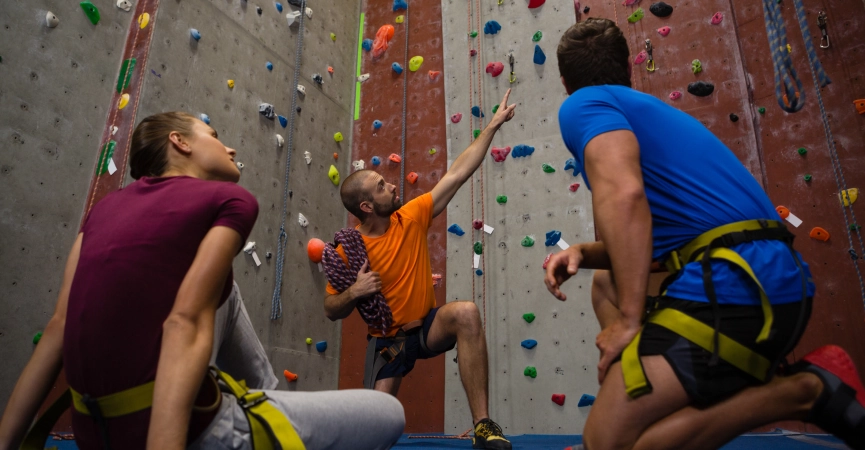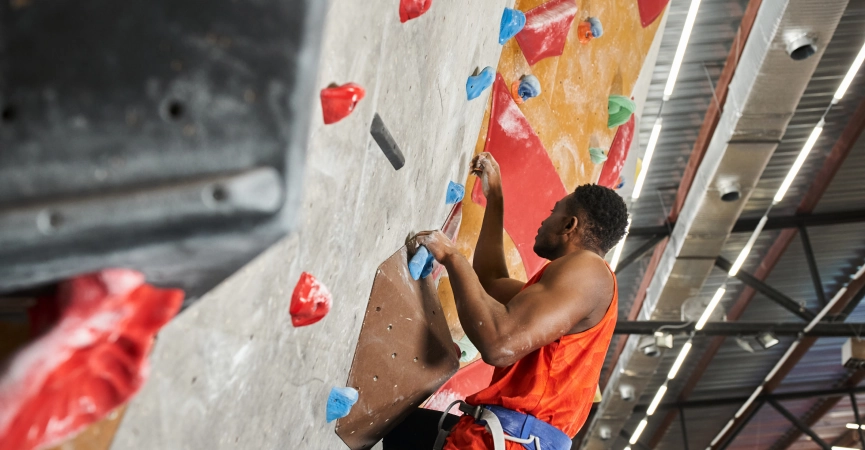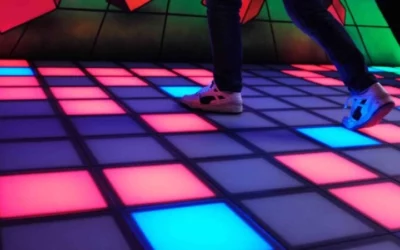Security in the climbing room: are you really to the point?
Climbing indoor climbing has won thousands of practitioners in recent years: fun , accessible, friendly ... but also a source of responsibility for structural managers! A forgetfulness, a bad reflex, and it is the accident. So, is your room secure enough? Here is an overview of the essentials to climb with confidence.

1. Compliant and safe infrastructure
The first pillar of a secure room is of course its facilities .
Make sure that all your walls, blocks and climbing sides comply with the standards in force (such as the standard EN 12572). This guarantees their solidity, their resistance to time, and limits the risks of rupture or structural degradation.
But security does not stop at the walls: the reception zones must also be subject to rigorous attention.
For block rooms, a cushioning floor with thick and well -maintained mattresses is essential to minimize injuries in the event of a fall.
For string rooms, self-assuring are valuable assets, provided they train users well ... and check that they attach correctly !
2. regular and rigorous maintenance
Even the best of equipment is not eternal. Wear, dust, repeated impacts can alter the safety of your structures. Regular verification is therefore essential.
- Walls, sockets and volumes : Inspect them frequently to detect cracks, boroughs or defective fixings.
- Electrical installations and lighting: optimal visibility is crucial to prevent trajectory errors or collisions.
- Self-assuring: make sure they are revised in accordance with the manufacturer's recommendations.
At Storkeo preventive and curative maintenance services
👉 Discover our range here: self-assignor Truth IQ-Storkeo
👉 and our Maintenance Solutions: Maintenance Storkeo
3. Clear and visible signage
A good information panel can avoid many accidents. Too often overlooked, signage is however an effective prevention tool.
Install clear reminders of safety rules in strategic places: at the entrance, in the locker room, near the climbing areas, and near the self-assuring. Opt for simple, legible, and multilingual visuals if necessary.
Also think of pictograms and color codes to distinguish difficulty levels or report risk areas.

4. A team trained and vigilant
Even with the best equipment, human error remains the first cause of accident . The presence of trained and attentive staff is therefore essential.
Your supervisors must be able:
- to identify risky behavior (bad proof, absence of a harness, errors of trash),
- to intervene quickly in the event of a problem,
- to train new practitioners in good practices from their first visit.
Offer regular training to your staff, set up clear procedures in the event of an incident, and encourage collective vigilance: an attentive look can sometimes save a life!
5. The continuous awareness of climbers
Creating a security culture also involves pedagogy . Posters, videos, interactive quizs, initiation sessions: multiply formats to educate your practitioners .
Remember that each climber is also responsible for their safety and that of others. Encourage them to report any anomaly, check their equipment , and respect the instructions without exception!
Discover the other
April
I wish to be contacted again
Would you like to be put in touch with a leisure advisor?
Don't wait any longer to complete the form.





